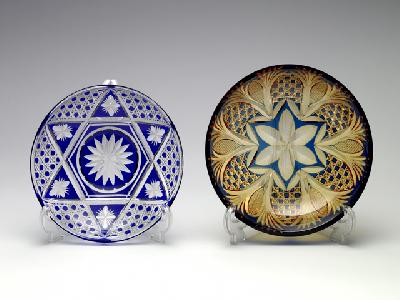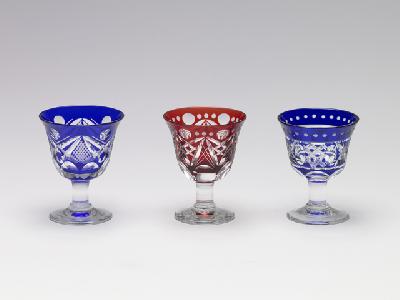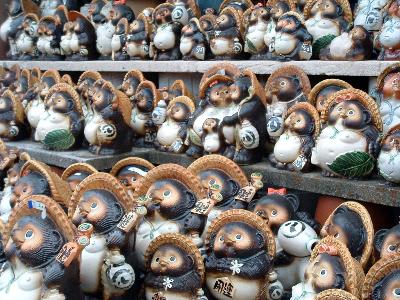|
Edo kiriko is a glass-cutting handicraft that began in the late Edo period. The origin of this craft dates back to 1834, when a craftsman, Kagaya Hisabe, first created a new technique of cutting glass with powdered emery.
In the late Edo period, transparent lead glass (crystal glass) was the main glass material used for this craft. The patterns were familiar ones seen on kimonos, such as bamboo fencing, chrysanthemums and hemp.
Now, many Edo kiriko pieces are made using faded glass. The layer of colored glass is thin and vivid.
In 2002, Edo kiriko was designated as a Traditional Handicraft by the Ministry of Economy, Trade and Industry
In the late Edo period, transparent lead glass (crystal glass) was the main glass material used for this craft. The patterns were familiar ones seen on kimonos, such as bamboo fencing, chrysanthemums and hemp.
Now, many Edo kiriko pieces are made using faded glass. The layer of colored glass is thin and vivid.
In 2002, Edo kiriko was designated as a Traditional Handicraft by the Ministry of Economy, Trade and Industry
| [+ADDRESS] | 
|
















